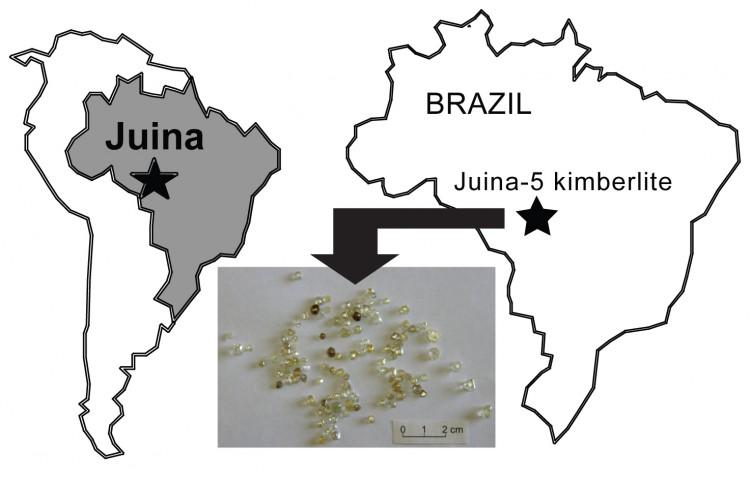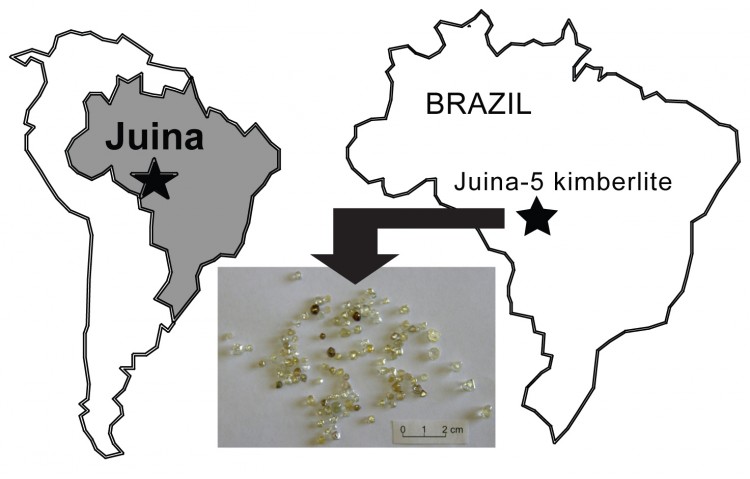Earth’s crust exists as large tectonic plates that move in relation to one another. Along certain regions of the ocean floor, such as the Pacific Ring of Fire, plates subduct under other plates. Until now, scientists have been uncertain what happens to the subducted plates.
Studying particles of minerals trapped inside diamonds from Juina, Brazil, an international team of researchers have found evidence that subducted crust can sink to more than 400 miles (640 kilometers) below the Earth’s surface and make its way back to Earth’s exterior again.
“Inclusions in diamonds are fantastically useful for studying the inaccessible part of the deep Earth,” said study lead author Michael Walter from the University of Bristol in a press release.
“It’s a bit like studying extinct insects in amber. Although we can’t extract DNA and grow dinosaurs, we can extract their chemical compositions and tell where they formed by growing minerals in the lab at extreme conditions!”
The team discovered that the composition of mineral inclusions housed within their batch of diamonds was indicative of surface rock that has melted and recrystallized under the extreme conditions within Earth’s lower mantle.
The deep underground origins of the Juina specimens make them unique. Most diamonds mined from the Earth’s surface originate from depths of within 120 miles below the ground in the upper mantle.
“The amazing thing about the diamonds from Juina is that each new batch we study provides something unexpected,” said co-author Simon Cohn in the release.
“As we investigate them in more detail with new techniques they continue to give up more of their remarkable secrets.”
The scientists also discovered that several of the specimens had extremely low amounts of a form of carbon called 13C, a finding consistent with the low levels of 13C in oceanic crust.
Altogether, the findings suggest that the carbon cycle extends into the lower mantle and not just the upper mantle as previously believed.
“It is really exciting to see Brazilian diamonds playing such an important role in this scientific breakthrough,” said Débora Araujo, professor at the Universidade de Brasilia, in the release.
“Samples from this region have been investigated for several years and yet we are not running out of exciting new discoveries.”
The authors conjecture that the diamonds were brought back to the outer crust by upwellings in the mantle about 90 million years ago during the Cretaceous Period.






Friends Read Free